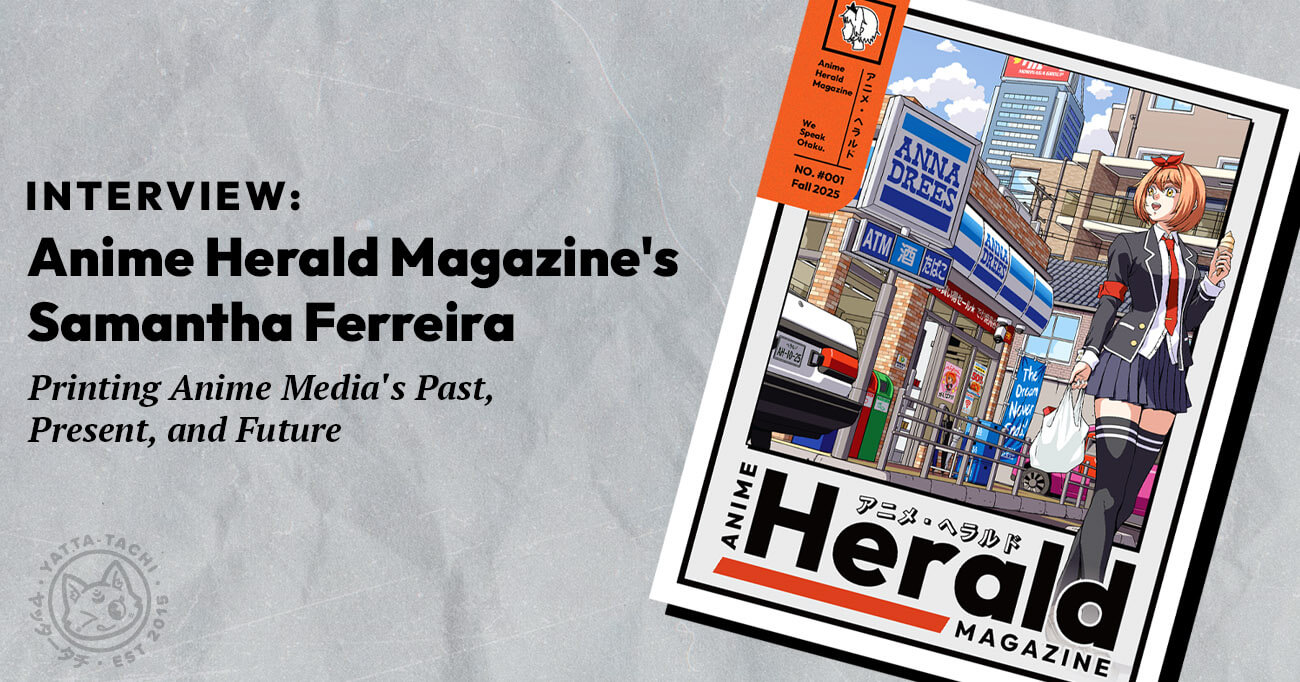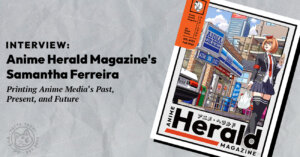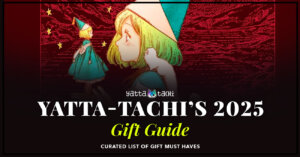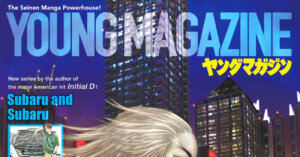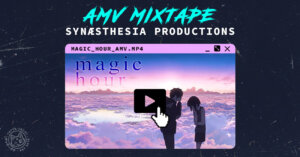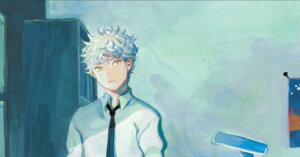FULL DISCLOSURE: Coop Bicknell has previously contributed to Anime Herald, but was not involved in the production of this issue to be released. Yatta-Tachi founder Katy Castillo regularly collaborates with Anime Herald and was involved in the magazine’s publication. The editor of this interview has a previously written article included in this issue, but was otherwise not involved in its production.
Back in May, Anime Herald announced that it would commemorate its 15th anniversary with the release of a print magazine later in 2025—this November to be exact. Filled with to brim with insights from talents across the anime press, Anime Herald Magazine is set to celebrate the publication’s past while looking toward its future. Funnily enough, I also happen to be a part of Anime Herald’s history. Ferreira gave me my start in the press back in 2020 with a guide into the world of vintage anime media collecting.
Flash-forward to today, and the two of us couldn’t help but chuckle as we sat down to chat about Anime Herald Magazine’s first issue. After all, Ferreira had interviewed me for her upcoming anime history book not that long ago. As we discussed the magazine, neither Ferreira nor myself could stop talking shop about our shared line of work. Be it the pitfalls faced by print publications of yore, the immensely talented people working in our space today, or the industry’s future in the shadow of turbulent times across all of media writing.
This interview has been edited for clarity.
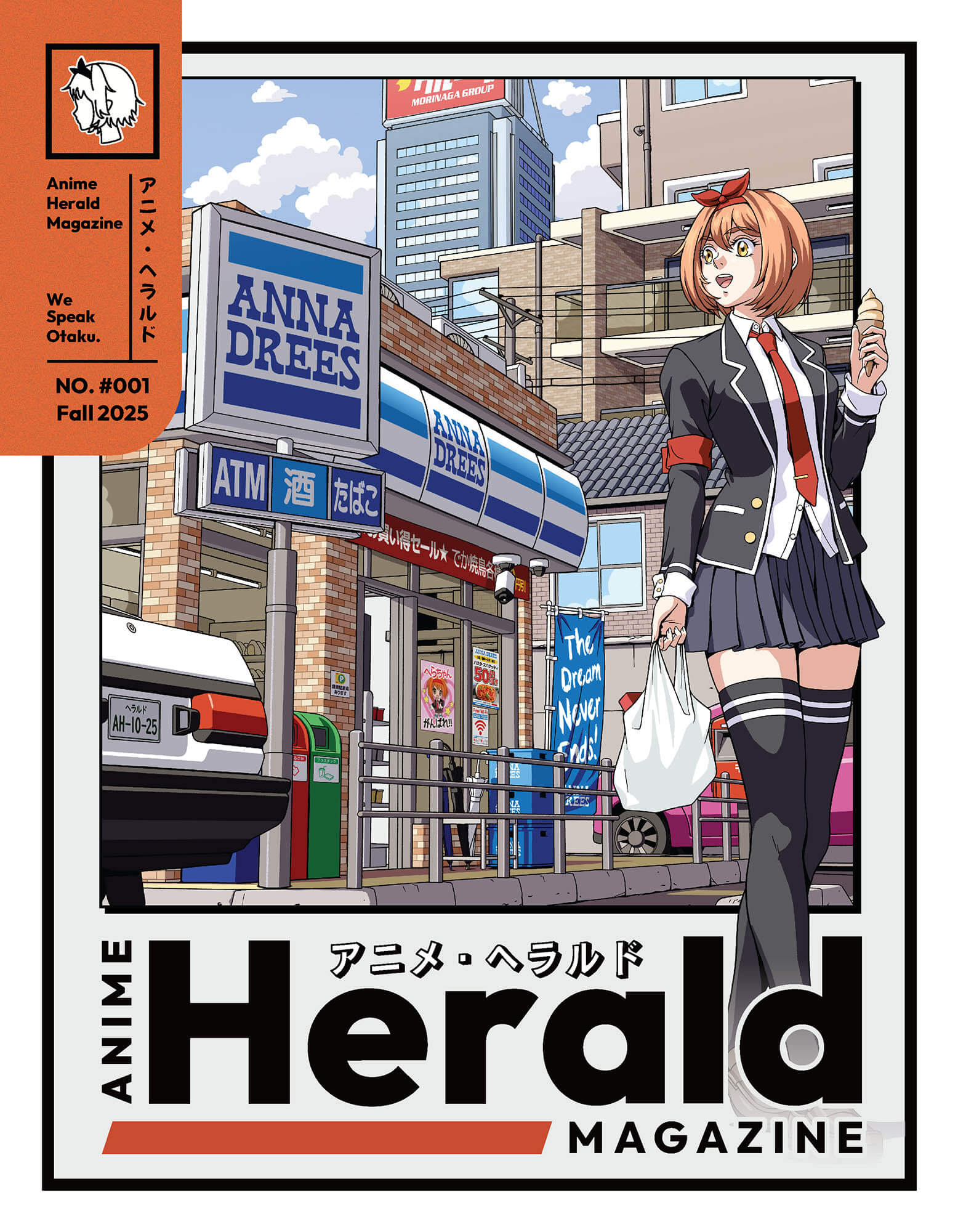
15th Anniversary Blowout
After fifteen years of running an independent anime publication on the web, what was it that made you say, “Maybe I should try my hand at print”?
Samantha Ferreira: This is something that I’ve wanted to do for a long time. I’ve talked about it with friends and colleagues in the back channels for a while. I was planning on doing something for our 10th anniversary in a smaller zine format. But due to a combination of the COVID-19 pandemic and me losing my job, that didn’t happen. So, I said, “It’s been five years since then and I don’t want to miss another milestone. We’re going to do this and we’re going to do it big or we’re not doing it at all.” So, I contacted people from my publication bucket list and said, “Hey, I’m going to be doing something for our 15th anniversary… Would you like to write an article?” I was floored when everyone said “Yes.” Like, absolutely floored.
When did you start planning the first issue of Anime Herald Magazine in earnest?
FERREIRA: I started talking with folks close to me about a year ago. I wanted to do this right—make sure that I wasn’t waiting until the last minute. You’ll want to confirm with Katy [Castillo] on this, but I mentioned to her at Anime Boston 2024 that I was doing this for the 15th anniversary. I started reaching out to people for articles last year in late October and early November. I put out the first announcement to our [Anime Herald’s] staff on December 21st, 2023. So, this has been a very long time coming.
What is the mission you have in mind for the magazine?
FERREIRA: When I was first planning this, way back when, I saw a need for more physical media—items you can hold and share instead of worrying about it being ephemeral. Say that a hacker takes out Anime Herald one day and knocks us out completely. Those articles are just gone and you don’t know if they’ve been archived. But with a paper copy, those articles will last for as long as those issues are in circulation. There’s a need for that in this day-and-age, especially when information is becoming more ephemeral and less reliable with the advent of generative AI and the like. This is our way of grounding this knowledge in an increasingly uncertain time.
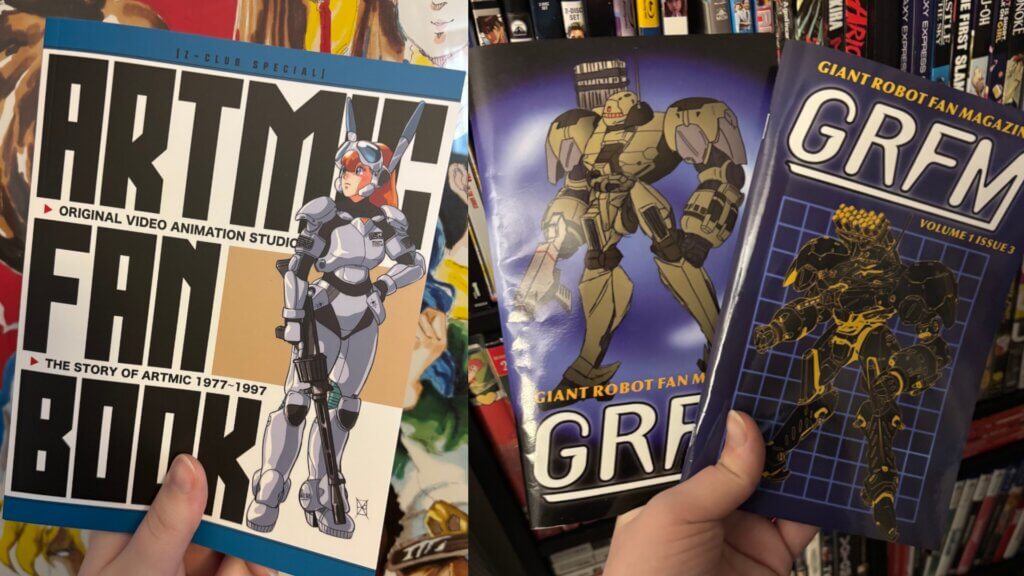
Right: A prepublication proof of Giant Robot Fan Magazine Issue 3 (left) next to the final version of the issue (right). Art by Ethan Halker.
Have you zine that?!
Did the recent revitalization of the zine scene influence Anime Herald Magazine? I’m on the editing team for Giant Robot Fan Magazine and I’ve long-admired the work of Zimmerit. So as a fan, I could imagine you opening one of those books and wanting in on the action.
FERREIRA: Yes and no. At first, no, because I came in right as those projects were starting. Also, this was more like my “crazy little idea.” But as I started to see more of these come out, I’ve tried to keep up with Giant Robot FM, Zimmerit, and whoever else has been putting out zines. By the way, you [The Giant Robot FM team] do amazing editing.
Oh, thank you!
FERREIRA: I’d be lying if I said that the format of our first issue WASN’T inspired by it. In particular, Colony Drop—the last American fanzine—inspired our initial format. It featured well-researched articles written by diehard fans who’ve been around for as long as I can remember. I admire the work done by David Cabrera, Dave Merrill, and everyone else who was involved. I wanted to do something that evoked a similar feeling, because there isn’t enough of that in this world.
Speaking of potential influences, I know you have an extensively curated and annotated archive of vintage anime magazines—including issues of Animerica, Protoculture Addicts, and Newtype USA among others. How have those publications of the past (and their pitfalls) informed how you’re moving forward with Anime Herald Magazine?
FERREIRA: There are certain things that I’ve seen that made me say, “This is where they’re trying to get too big, too fast.” With Animerica, you could tell when their rivalry with Anime Insider kicked up because the tone and quality of their articles changed. It started to target the same market, which ultimately (and unfortunately) led to their undoing. The collapse of the market didn’t help. With Newtype USA, their end came as a surprise because they were doing quite well. The implosion of ADV Films killed them. They tried launching another magazine, but it just didn’t work out.
Same thing with Protoculture Addicts. You could see them shifting to general anime coverage after the first few issues of their Robotech era. Animerica tried to expand out of their initial format when their initial issues had a journal format. As they branched out, you could tell that they weren’t sure of what to do, and wavered between styles. Then there’s Anime Insider, which was…Anime Insider.
That was a Wizard joint, right?
FERREIRA: Yes! Then we had Beckett… No one cares about Beckett. But you could identify the growing pains of each publication—where they were trying something that didn’t work out. That helped me to lay out a roadmap for where to take our initial issues. I’ve also been studying the greater market as well because it’s my job. The format of this first issue will be different from what we intend to do going forward. That’s because this one is a celebration of where Anime Herald has been and where it’s going. For future issues, we’ll be taking feedback to see what readers would like to see next while we [the Anime Herald team] remain true to ourselves.
Over the course of your own career, you’ve had the opportunity to speak with many of the minds behind the magazines I just named. If you feel comfortable sharing it, is there a piece of advice from one of these veterans that you’ve been holding tight throughout this endeavor?
FERREIRA: That’s a good question, because I’ve talked with many people over the years. MANY people. Some good advice came from Tim Eldred, who said, “Always make sure you have some good people in your corner—folks you can rely on, folks you can trust. And keep an artist on hand because you’ll need one eventually.” There was also Carl Horn who said, “This is going to be one of the most taxing things you’ve ever done, but it’s worth doing because you’re keeping a tradition alive—one that’s been around since I started working in this industry. Get in there, be proud of what you’re doing, and whatever you do, make sure you’re sure of it.”
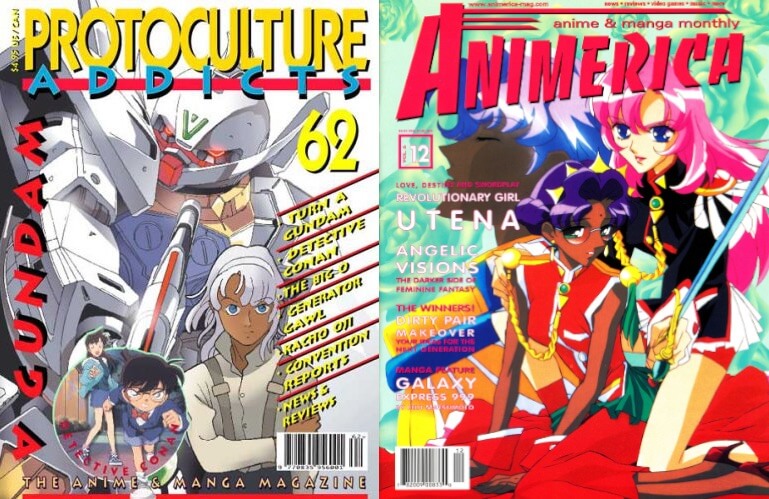
Right: The December 1998 Issue of Animerica, featuring a cover story on Revolutionary Girl Utena.
Learning from the back issues
Given our talk of fan zines and past publications, what makes Anime Herald Magazine different from both forms of anime writing in print? What space does it occupy? Looking at the lineup for your first issue, it feels like you’re threading the needle between an enthusiast publication and scholarly journal.
FERREIRA: We are. I’ve realized over the years that we can’t keep going back to the same format over and over again. We can’t do the Otaku USA format, the Animerica format, or the Anime Insider format anymore because the world has changed so much. We want to do something that will be timeless.
Let’s be fair—back in the day, this magazine [holds up the August 1993 issue of Animerica] was your source of news, criticism, and interviews. It was your portal into the anime world if you didn’t have access to forums, usenet, friends living in Japan, or importers like Books Nippan. This was the key to learning about anime at the time. But these days, if you want news, you go to Anime News Network, Crunchyroll or Anime Trending. If you want reviews, the format has changed greatly over the years. Doing DVD or Blu-ray reviews won’t work anymore because it’s a small market. If you’re doing a streaming review, it will be outdated four times over by the time you’ve hit the end of your lead time.
We had to look long and hard at what we’re doing, see what worked within these enthusiast magazines, and inject our own editorial identity. I love anime. It’s a shock, right? [chuckles] I’ve loved it since I was eight years old. I love exploring everything about anime. I love seeing what lies beyond the screen and printed word—it’s such an amazing medium. I love sharing that making people think about what anime could be and what it is.
When we settled on our current long-form format with the Anime Herald website, I wanted to really embrace that idea. It’s the same with the magazine. At the same time, I wanted a format that’s more digestible and suitable to print. For future issues, I’d like to expand on that—introduce elements from past magazines we might be familiar with, but in a way that’s undeniably us.
What are some of the difficulties you’ve encountered so far in the switch to print? From talking with yourself and others, a web publication could be operated by one person if need be. However, when you start getting print proofs back from the printer, the corrections process tends to be a bit more involved than just making a quick tweak in your site’s CMS.
FERREIRA: Yes, this is a situation where we have to get it perfect the first time. Because if it’s in print and you’ve screwed something, it’s there forever.
FERREIRA: [Chuckles] Yes, exactly. You have to make sure your work’s perfect. At the same time, you can’t be the only one running the show. I’ve been an active editor for many years; even now as I work in an administrative capacity, I still edit because I like doing it. But for something like this, I really had to step back and say, “All right, team. I need you to do this. These articles are out, these ones have topics, these ones do not. I need you to come in and take care of these. If there’s anything you need, I’ll be happy to come in and support you. But for the most part, I’m putting all of my trust in you.”
It’s been a godsend because I had to write a piece as well, and whew, it was a big one that took a while. I didn’t expect to write up a full 40-year history of anime media when I started on this, but I did! And I’m proud of that!
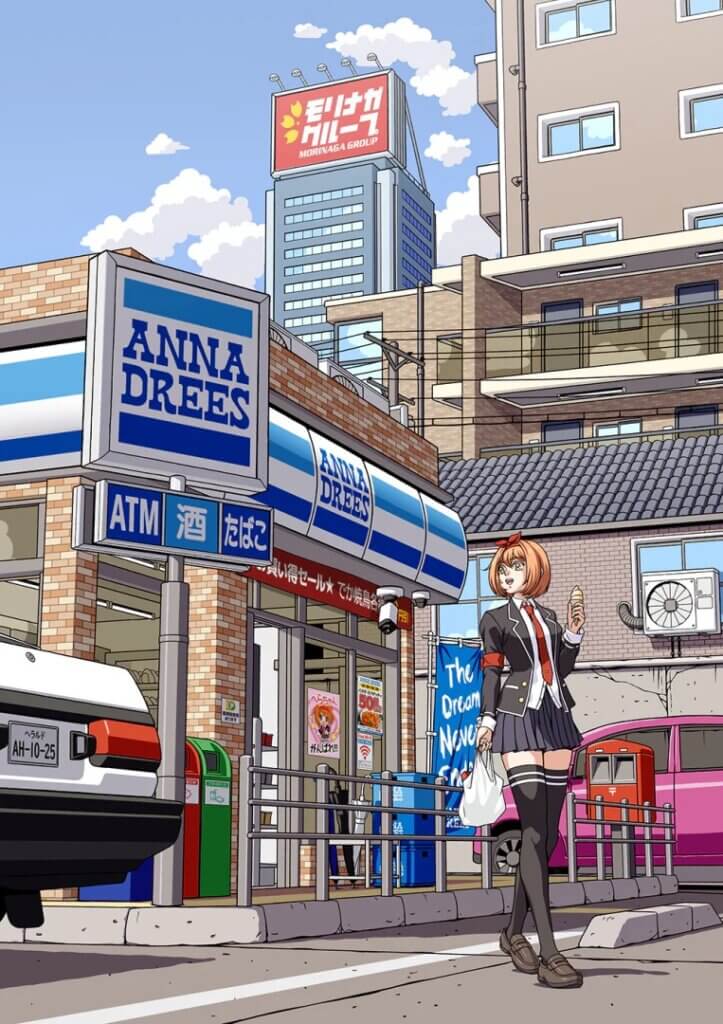
Salud to Salot!
Tell me a bit about the magazine’s production crew, because I’m sure they’re intimately familiar with the challenges we just spoke of. Also, José Salot’s cover art is hella sick.
FERREIRA: It is so good! I’ve been wanting to work with José for a while, actually. We started talking about doing a project while Anime Herald was in the middle of the recent site redesign, but we couldn’t make our schedules line up. Once there was a plan, I said, “Hey José, do you have any openings? I’d love to keep working with you.” We got together and started trading ideas on what we’d want—going back and forth on how the cover should turn out. I gave him the basic idea and he just ran with it, creating something amazing. I have nothing but nice things to say about José and his work—he’s a pleasure to work with and an outstanding artist. I cried when I first saw the finished art.
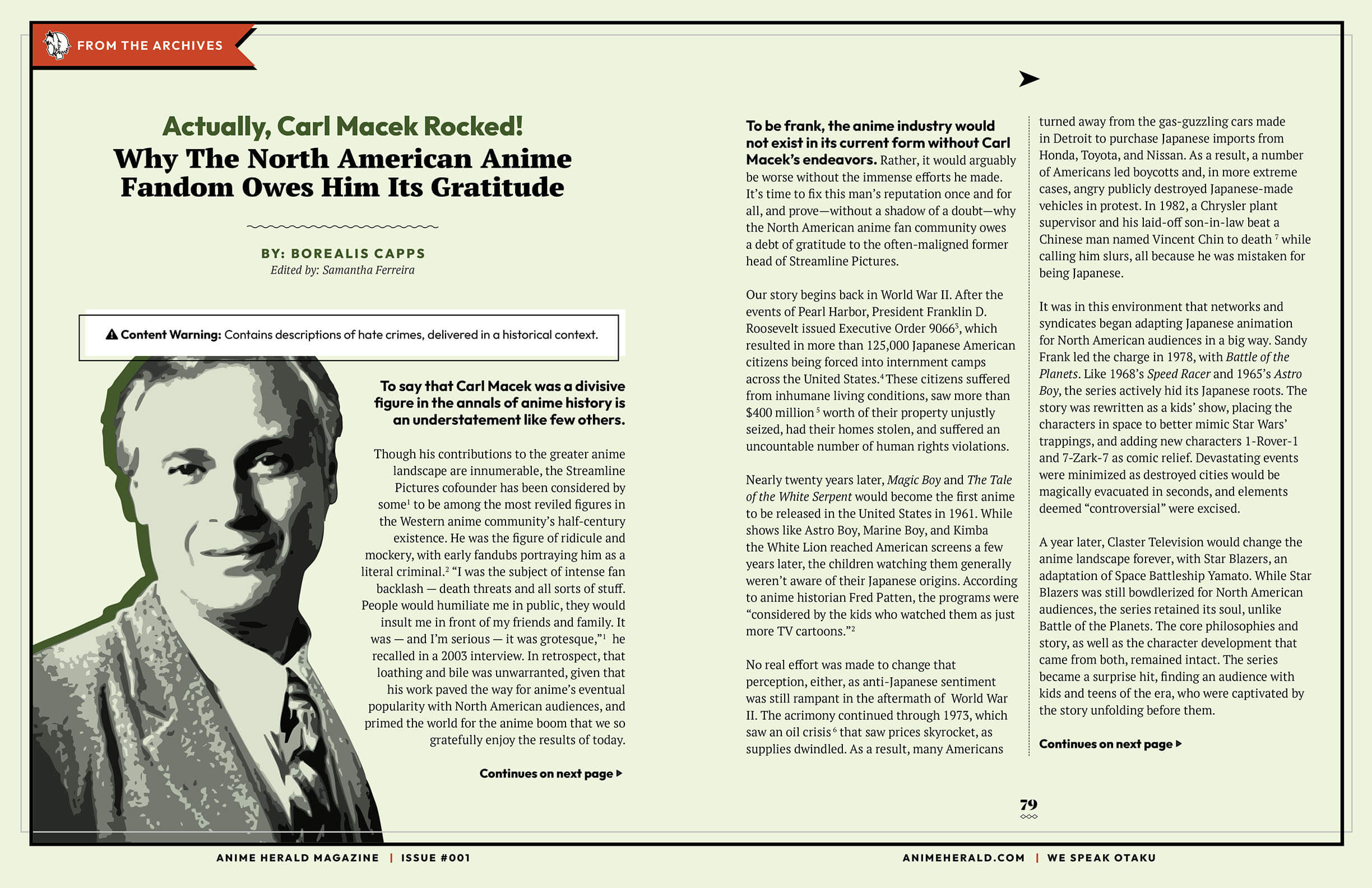
I would too, to be honest.
FERREIRA: For the rest of the group, Katy was a no-brainer. She was the first person I mentioned this project to back in 2023. I wanted her to do our layouts because she’s one of the best designers in the industry, hands down. She has a deep love of the medium, but at the same time, she loves those old magazines too. Her previous mock-ups blew me away. Beyond those folks, my editorial team has done a lot. Nicole Meijas, Cy Catwell, Masha Zhdanova, Trent Cannon—they all did outstanding work. I know they’re working their butts off every day and I really appreciate it.
On the topic of that stacked lineup, please talk up the wonderful writers you’ve tapped for this. It’s a murderer’s row.
FERREIRA: I’ll be honest with you, I was terrified when it was time to reach out to everyone. I know these people quite well—I’ve worked with them as colleagues, we’ve crossed paths, and we share passions. But at the same time it’s very daunting to say, “Hey, I’d love to have you work on something for me. Would you like to do this?”
I’m a very anxious person by nature, I won’t lie. So, reaching out to folks like ANN‘s Lynzee Loveridge, Otaku USA’s Daryl Surat, yuri scholar Erica Friedman of Okazu, Anime Feminist’s Chiaki Mitama, ANN’s Lucas DeRuyter, and so on was so intimidating. I was over the moon when everyone said yes! This article lineup is the stuff of dreams—these are the stories I’d want to read if I was 16 or 17 years old. We have an examination of Ero-guro, histories of convention signs and anime stage shows, a heartfelt retrospective on Anime World Order, a critique of capitalism through the lens of Girls Band Cry, and an interview with the creator of Onimai! I still don’t know how this happened, but I’m genuinely grateful to every single person who is contributing to this issue.
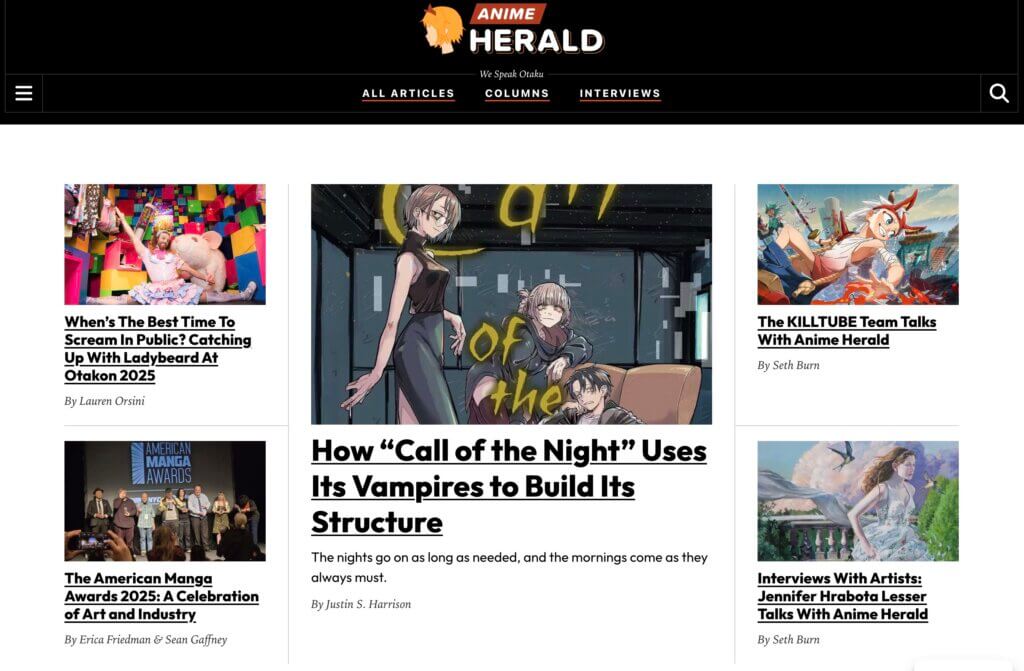
So many pieces, so little pages
How have you gone about balancing out stories specifically written for the magazine with pieces you’ve selected to make the jump to print? I have a feeling that you already have a tentative list of features you’d like to bring back for the next issue.
FERREIRA: Yes, I do. Going forward, I’d love to feature one or two previously published web articles in the magazine proper. I believe we should put a spotlight on not only the new pieces, but the amazing work we’ve featured on the site over the years. When I started putting together our selection of reprinted pieces, there were some that suddenly had me saying “I need that one!” And it’s less that I need it, and more that I want to bring that coverage to print. Like Alex Henderson’s Comedy, Catharsis, and Cooking the Canon in Today’s Menu for the Emiya Family, it’s such a fun article. There’s also Seth Burn’s interview with Shoji Kawamori. I have nothing but nice things to say about Seth—he’s one of the best interviewers in the business and that he’s spoken with Kawamori not once, but twice, is absolutely amazing.
Now, the Fanta Zine history piece, that one is important because it’s thematically on brand as a magazine article about a magazine. It’s a valuable piece of history about the first [English language] anime magazine. Each example I just gave has elements that are important to preserve.
What is it about the magazine that made you say, “we’re going to put together a proper press release for this.” Especially when you consider that most projects like this are announced via social media or the team’s preexisting website.
FERREIRA: I wanted to do it by the book. I’ve taken a lot of pride in what we’re doing with Anime Herald Magazine. There are many amazing people who are working on this—our writers, editors, José, Katy—and I wanted to ensure that I’m doing right by them. So I said, “All right, to heck with it. We’re doing a press release.” I want my team to be proud of their work, know that I’m taking good care of it, and doing everything in my power to bring our magazine to as many people as possible.
What’s been the scariest part of this experience so far? When dealing with physical products, I know there’s always anxiety around dead stock and ensuring you sell enough to keep going.
FERREIRA: I’ll be honest, I haven’t had much to worry about because I’m a software engineer by trade. I’ve been saving what I’ve made for the past couple of years, because I want to do this to my specifications but not go into debt doing it. I chose to open preorders because I wanted to ensure that we’re not over-ordering copies of our first issue. Each order of this issue will be processed and sent out by me as well. We’ll close preorders a week to two weeks before it goes live. But I’ll order extra copies to have them available in case something goes wrong or if we receive additional orders in the meantime. I’ll switch us to a print-on-demand model afterward. That way, no matter what happens, the issue will always be available. At the same time, we won’t eat any egregious additional costs. I’m not sure if we’ll be able to get the exact same settings, but it’ll still be through the same publisher and retain the same high print quality.
So if you’re a prospective reader and you’re picky about quality, you should get in on this first preorder, right?
FERREIRA: Yes, because that will be a traditional print run. I have to look into my options because, again, I’m not sure if I’ll have the same options available to me for print-on-demand copies. But I want to ensure that this is a nice initial release. We’re also considering additional perks (perhaps a discount code for the second issue) and a survey for readers to provide feedback.
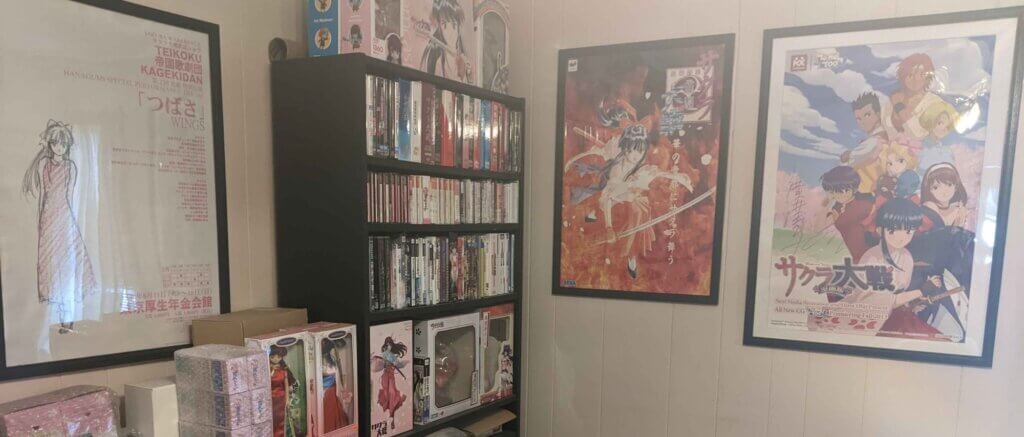
Anime Media’s Future
Here’s the most important question of this interview: where’s the Sakura Wars article? [Ferreira is a famously huge fan of the series] The magazine can’t come out on a day that ends with “Y” without one!
FERREIRA: Issue number two! In issue number one, I wanted to do something special, but more substantial. So, I dug deep into my research hole (my expertise!) and put together a lengthy history of the anime media—starting with Fanta Zine, then moving through the zine culture of the 80s, and finally, early online reporting to where it is today. I really hope that readers enjoy it.
I’m looking forward to that one. Particularly because, when we go back to what we talked about earlier, after you’ve spoken and worked with folks on the press side, it’s fascinating to see how we’ve arrived at our current moment. Especially considering everything that’s happened over the years.
FERREIRA: Oh yeah. Let’s be honest. The early media side of the industry was put together with sticky tape.
It was the jankiest stuff ever. It’s also interesting how our industry remains on that foundation. We may need to start pouring concrete into those holes.
FERREIRA: That’s what I’m trying to do with this. It’s not going to happen overnight, but in five or six years, this might be a place where we can at least start to build careers. That’s my dream for this publication. With this first issue, I can’t say, “I’m going to quit my job and become the head of an anime publication.” But in five or six years, maybe we’ll be at a point where we can say, “Okay, we are sufficiently independent, we can hire some full-time staff, we do this, this, and this…”
This magazine comes at a time where we’re seeing far too many organizations shut their doors. No matter what happens, I want to run this publication well, fairly, and sustainably. I want it to be a place where everyone can come out ahead. That’s my goal.
Where can prospective readers go to keep up with the magazine’s production and place their preorders for the first issue?
FERREIRA: As of right now, shop.animeherald.com is our online store—which we will be handling all of our sales through. As for updates on the production, we will be revealing those on the Anime Herald website.
Is there a note you’d like to leave our readers on?
FERREIRA: If you like an independent anime or manga outlet (be it Yatta-Tachi, Anime Feminist, Okazu, or others), support them on Patreon and Ko-fi. Buy their merch. Every dollar helps. Most of us are running on a budget of under $500 a month and those dollars go to paying our writers a fair rate, keeping our standards high, and letting us do more. Many of us work multiple jobs treading water so that we can keep going. Every contribution makes a world of difference. I hope everyone enjoys the first issue of Anime Herald Magazine [both in print and digital] and finds something they like in it.
You can pre-order the print and the digital edition of the upcoming Anime Herald Magazine by visiting the Anime Herald shop.
Article edited by: Adam Wescott
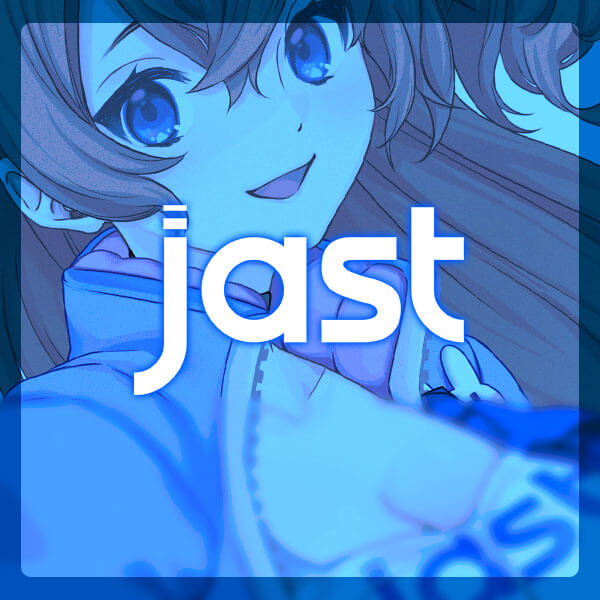
Featured Sponsor - JAST
The sweetest romance and the darkest corruption, the biggest titles and the indie darlings; for visual novels and eroge, there's nowhere better.
Big thank you to our supporters
From their continous support, we are able to pay our team for their time and hard work on the site.
We have a Thank-You page dedicated to those who help us continue the work that we’ve been doing.
See our thank you page